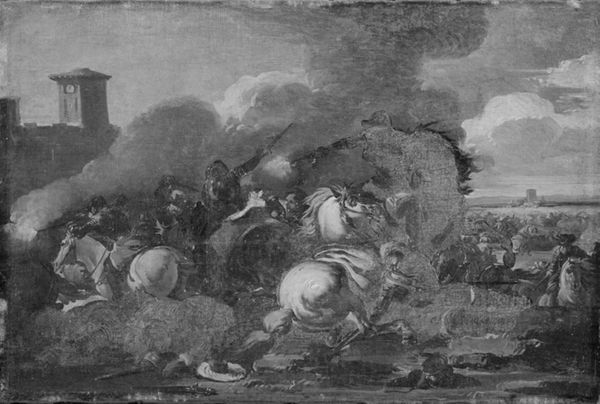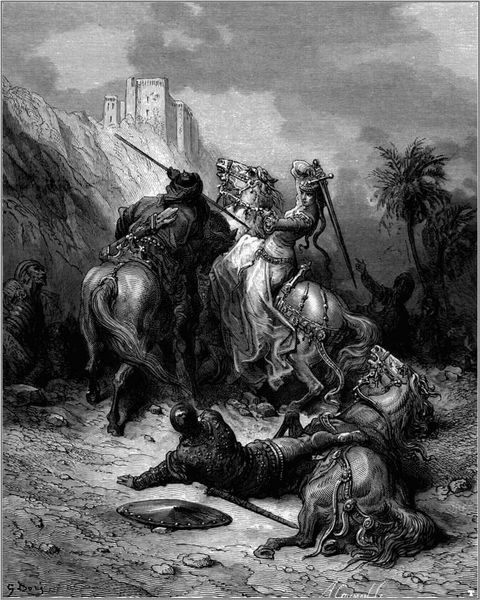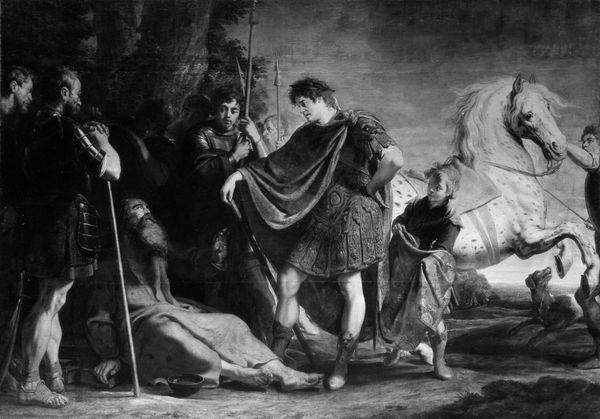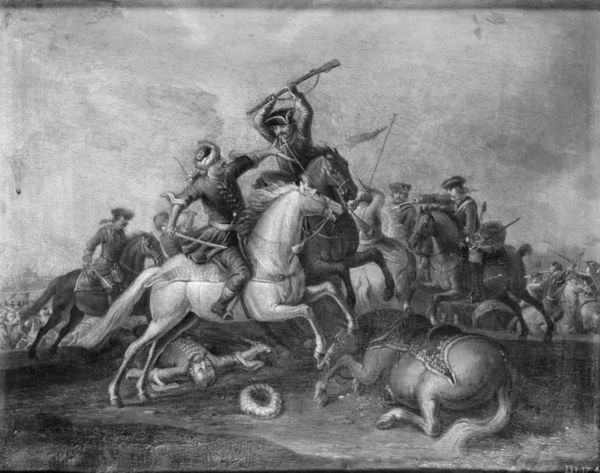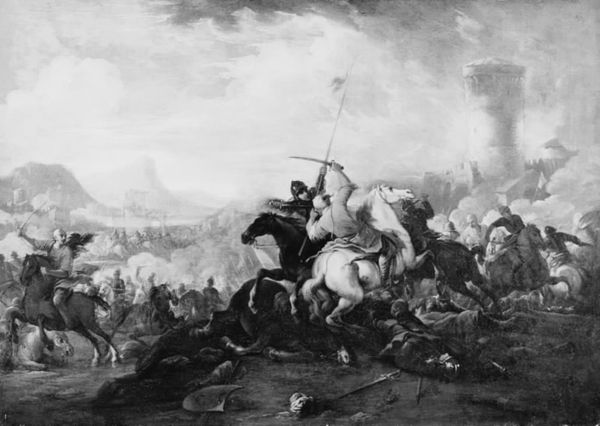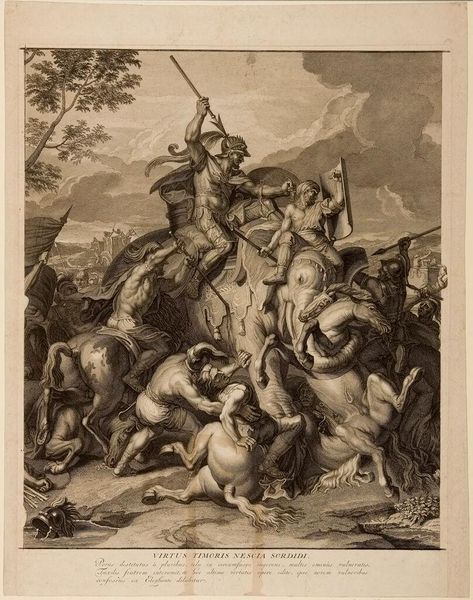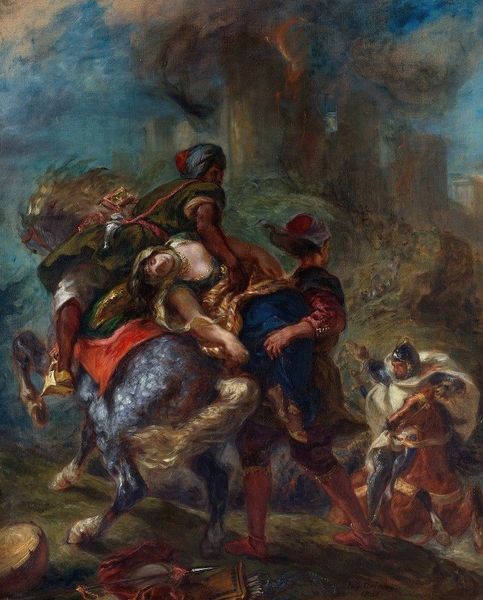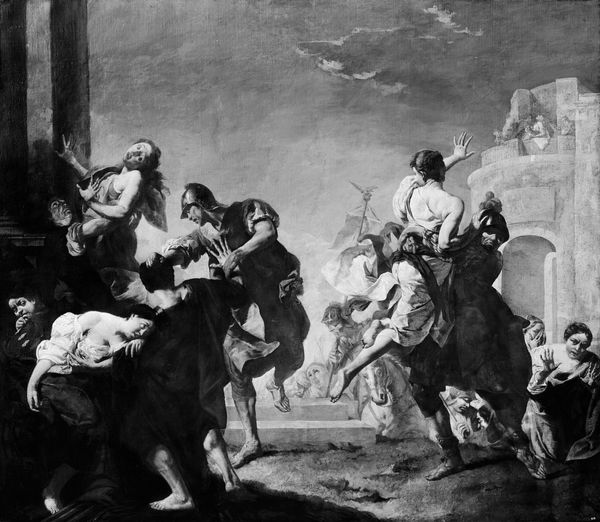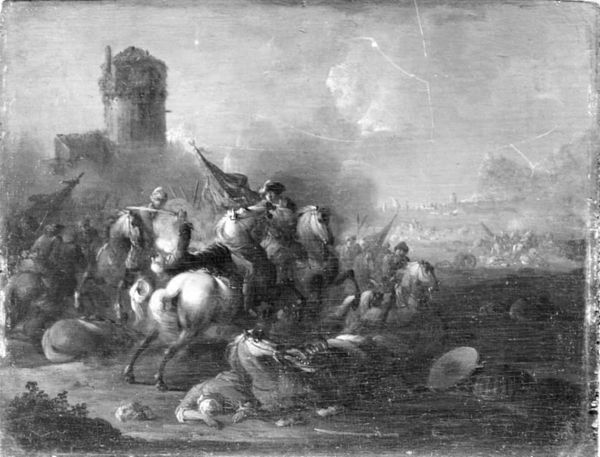
painting, oil-paint
#
painting
#
oil-paint
#
landscape
#
figuration
#
romanticism
#
history-painting
Dimensions: 15 3/8 × 20 3/4 in. (39.1 × 52.7 cm)
Copyright: Public Domain
Editor: So this is Benjamin West’s “Queen Philippa at the Battle of Neville's Cross,” painted around 1789. It’s oil on canvas, and, wow, it's pretty dramatic. All that intense light and shadow makes it seem super imposing and maybe even a bit… chaotic. How do you interpret this piece? Curator: The drama stems not just from the chiaroscuro but from the symbolic weight of Queen Philippa herself. West presents her as both a figure of power and of mercy, a duality reflecting idealized femininity of the late 18th century. Do you see how the artist carefully positions her, centrally and elevated, but also attending to the wounded? Editor: I see that. She’s right in the middle, drawing attention to herself with the horse in stark contrast to the darker background, but she's also concerned with the figure collapsed on the ground. It's like she’s supposed to represent both strength and compassion. Why emphasize that dichotomy, though? Curator: Because West is consciously invoking a very specific historical narrative—the benevolent ruler intervening in the chaos of war. This resonates deeply with cultural memory, casting Philippa as an almost saintly figure, an intercessor. He links her image to long-standing ideals of virtuous queenship, accessible to the intended English audience, but at the cost of overlooking brutal aspects of war. This painting attempts to elevate her – and by extension, the British monarchy – to a moral high ground. The imagery of power softens her royal persona by alluding to compassion and nurturing characteristics to inspire patriotic sentiments. Editor: That’s interesting; I was so focused on the immediate impression of the battle scene that I missed those historical connotations. Thanks for illuminating all that. Curator: And thank you for noticing the tension between light and shadow - a detail which serves as both compositional device and symbolic key, connecting past and present, virtue and chaos.
Comments
No comments
Be the first to comment and join the conversation on the ultimate creative platform.

